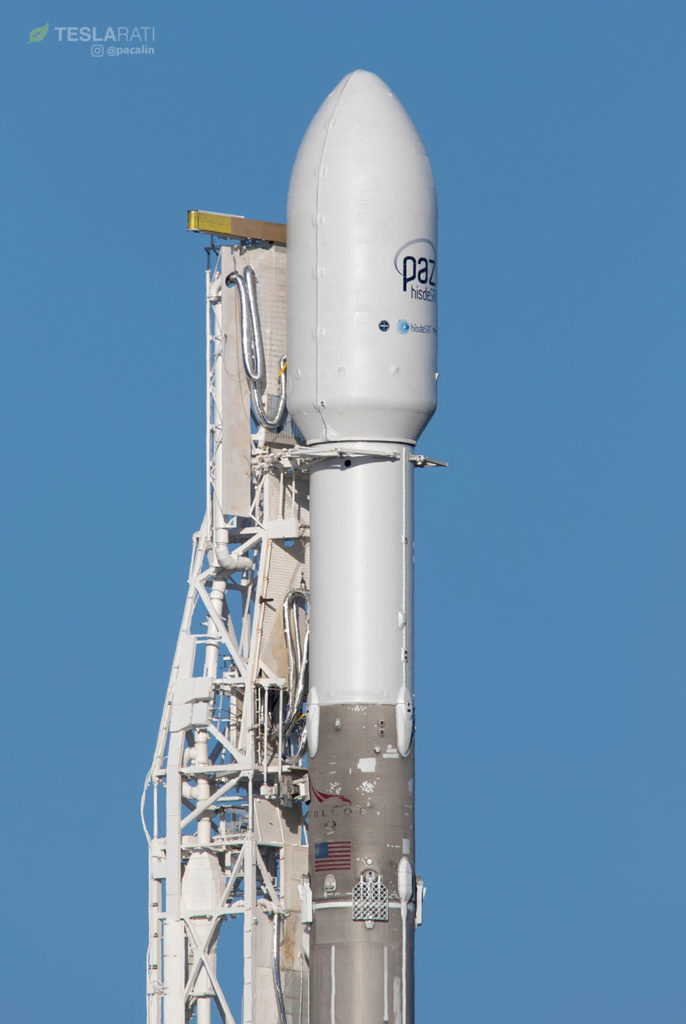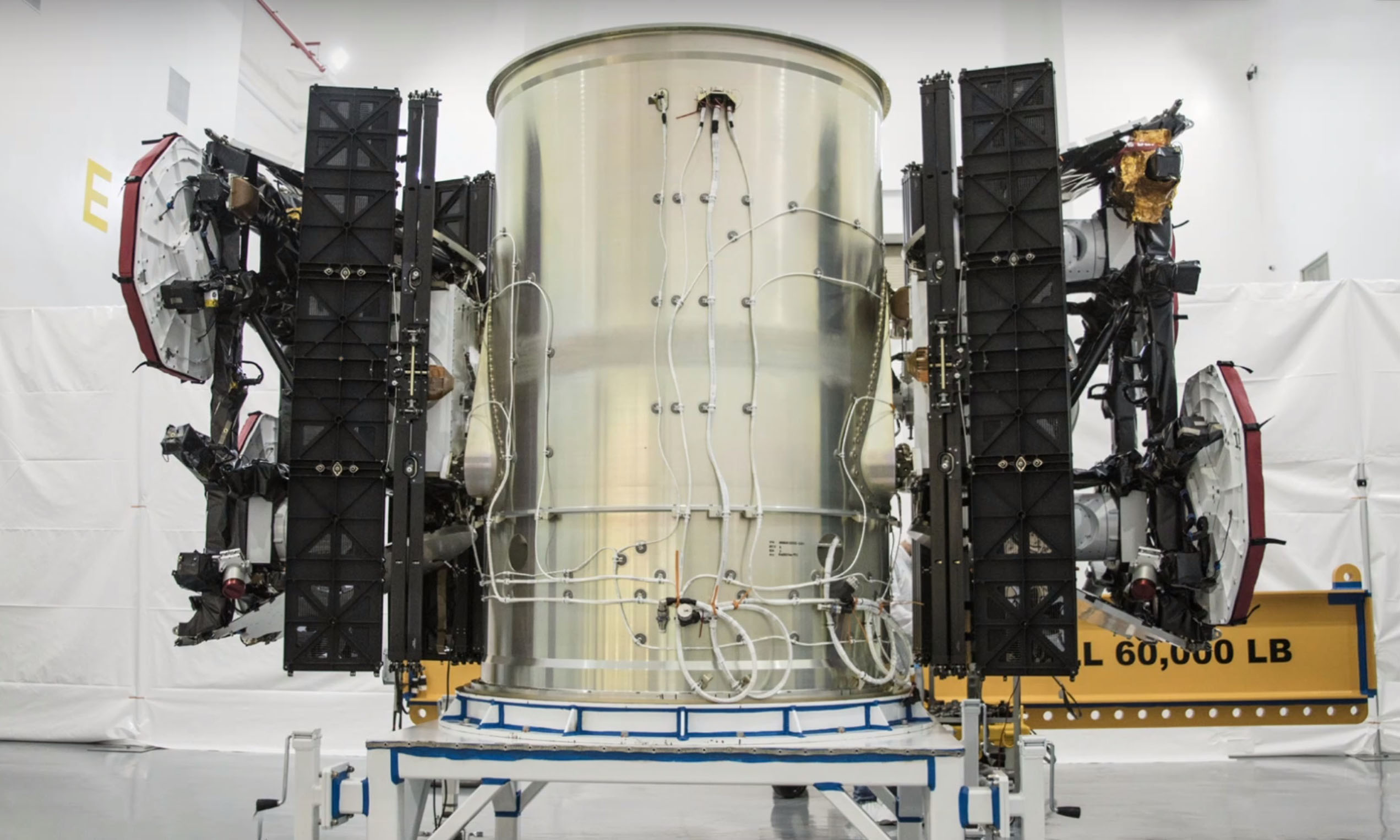
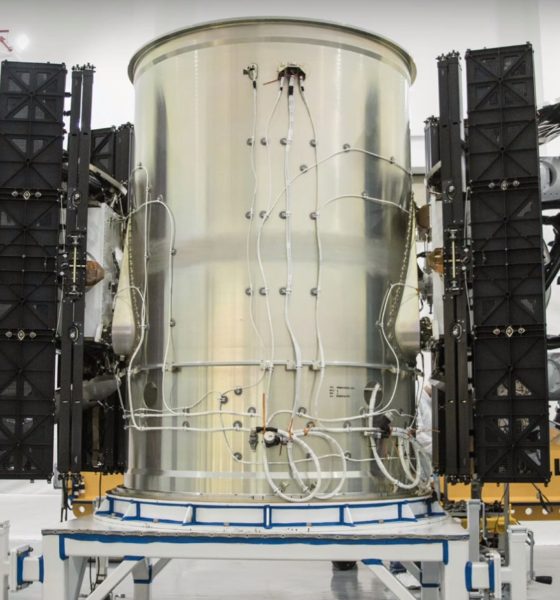
SpaceX
SpaceX Starlink becomes first US mega-constellation to gain FCC approval
Sans fanfare, the Federal Communications Commission (FCC) has made SpaceX the first US-based entity authorized to launch and operate a massive broadband internet satellite constellation in Low Earth Orbit (LEO).
The Starlink constellation authorization comes a bit less than five weeks after SpaceX launched its first two prototype communications satellites as co-passengers with the Spanish PAZ imaging satellite. CEO Elon Musk confirmed that they had safely made it to orbit and were communication with ground control in Hawthorne, CA, but SpaceX’s lips have remained sealed beyond Musk’s brief mention.
First two Starlink demo satellites, called Tintin A & B, deployed and communicating to Earth stations pic.twitter.com/TfI53wHEtz
— Elon Musk (@elonmusk) February 22, 2018
Unofficially, sources in the loop were told that Musk forwarded a memo to all hands soon after launch, confirming that the Starlink prototypes had successfully sent their “Hello, world” message to ground control. In the month since launch, the Tintin twins appear to have both raised their orbits slightly, suggesting that their propulsion systems were/are at least partially functional. Per FCC licenses for the experimental satellites, the Tintins are expected to eventually raise their orbits from 500km to approximately 1100km over the course of testing, maneuvering that would require their SpaceX-designed ion propulsion modules to function properly.
- SpaceX’s first Starlink prototypes launched in late February aboard a flight-proven Falcon 9 booster. (Pauline Acalin)
- SpaceX’s Starlink satellite constellation efforts could provide the company with valuable experience that can be applied around Mars. (unofficial logo by Eric Ralph)
Gwynne Shotwell, COO of SpaceX, gave an official statement on the FCC’s authorization of Starlink, reiterating the company’s awareness of a huge amount of work ahead of any operational constellation.
“We appreciate the FCC’s thorough review and approval of SpaceX’s constellation license. Although we still have much to do with this complex undertaking, this is an important step toward SpaceX building a next-generation satellite network that can link the globe with reliable and affordable broadband service, especially reaching those who are not yet connected.”
As the SpaceX’s first foray into true electric propulsion and dedicated communications satellites, not to mention an array of cutting-edge technologies (optical/laser-based interlinks, advanced antenna tech, and more) presumed to be on board, it’s fair to assume that the public silence is indicative of a heads-down work ethic while Starlink engineers and technicians get a handle on the tasks before them and learn volumes about the manufacture and operation of advanced satellites. If they were to occur, failures or serious problems with these first two prototypes would, in fact, benefit SpaceX and strengthen all future prototype testing efforts, ultimately resulting in a more successful final product and happier customers in the long term.

SpaceX’s first two Starlink prototype satellites are pictured here before their inaugural launch, showing off a thoroughly utilitarian bus and several advanced components. (SpaceX)
Although the FCC’s approval carries with it a number of conditional requirements of SpaceX, it is all but guaranteed that SpaceX will be able to satisfy those conditions and ensure that Starlink remains authorized, barring any significant and unforeseen legal challenges. Of those conditions, the most significant condition of note relates to a request for additional information from SpaceX on the company’s end-of-life and deorbit practices in order to guarantee that the constellation’s 4,000+ satellites do not become a space debris risk. The most serious threat to Starlink as it stands proposed today is the FCC’s decision to deny SpaceX a waiver for the requirement that 50% of any given LEO internet constellation must be launched six years after approval. In the case of the 4400+ satellite Starlink constellation, this would require SpaceX to launch more than 30 satellites a month for every month between now and March of 2024. Thankfully, the FCC approval acknowledges that it will reconsider SpaceX’s request for a waiver of this requirement in the future, once the design of Starlink has been finalized.
Correction: While the FCC’s final license grant appeared to deny a waiver requested by SpaceX for the requirement of launching 50% of the constellation within six years of licensing, the FCC has in fact already reconsidered this requirement [PDF] for uniquely large constellations out of its sheer impracticality. SpaceX should thus have some added flexibility in the pace of its deployment of Starlink.
Limited internet service from SpaceX’s Starlink constellation is not expected to begin before 2020 at the earliest. The FCC’s announcement can be read in the news release here [PDF] or in the full application approval here [PDF].
https://www.youtube.com/watch?v=v5-WCwZ4cSE
Follow us for live updates, behind-the-scenes sneak peeks, and beautiful photos from our East and West coast photographers.
Teslarati – Instagram – Twitter
Tom Cross – Twitter
Pauline Acalin – Twitter
Eric Ralph – Twitter

Elon Musk
Lufthansa Group to equip Starlink on its 850-aircraft fleet
Under the collaboration, Lufthansa Group will install Starlink technology on both its existing fleet and all newly delivered aircraft, as noted by the group in a press release.
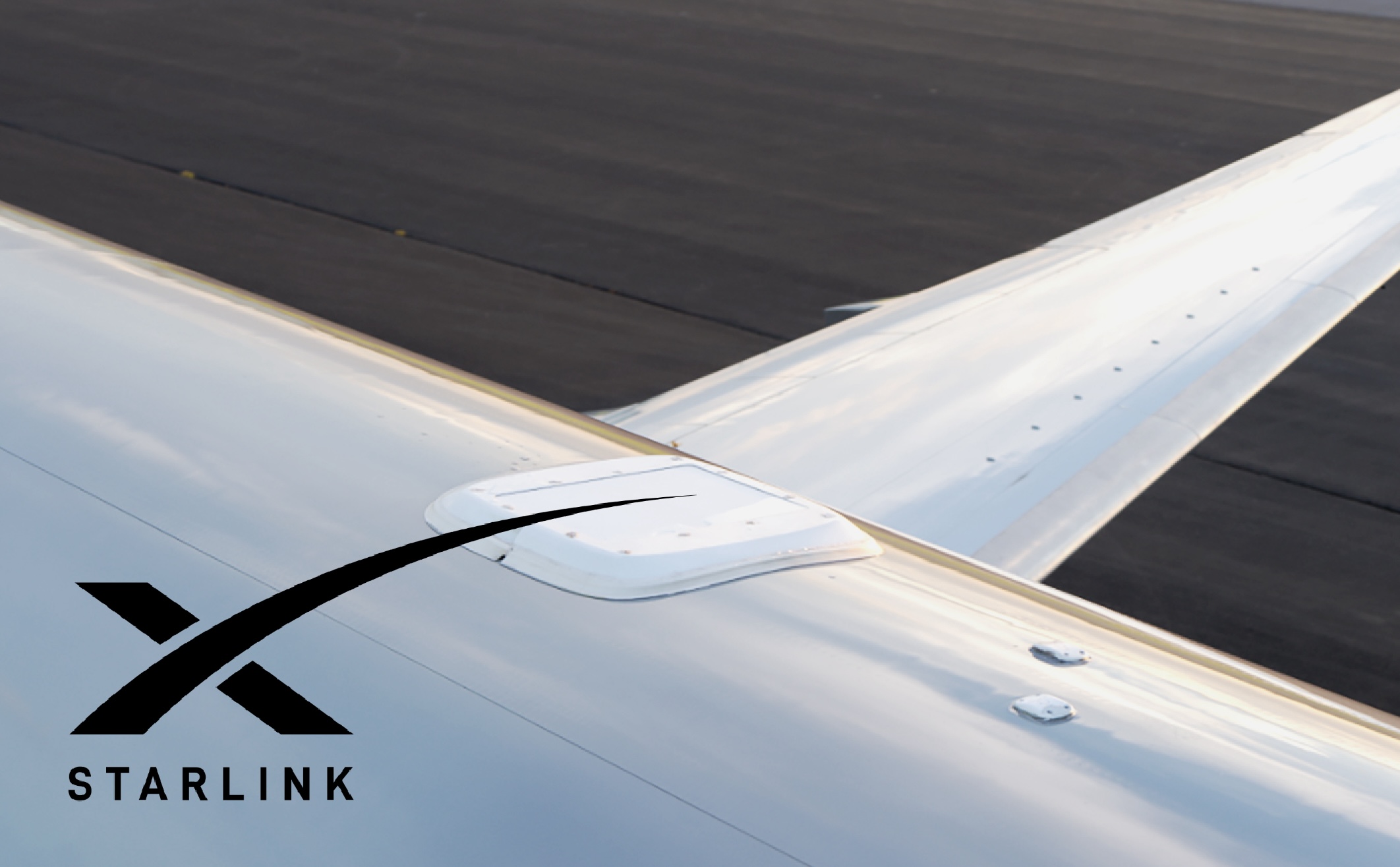
Lufthansa Group has announced a partnership with Starlink that will bring high-speed internet connectivity to every aircraft across all its carriers.
This means that aircraft across the group’s brands, from Lufthansa, SWISS, and Austrian Airlines to Brussels Airlines, would be able to enjoy high-speed internet access using the industry-leading satellite internet solution.
Starlink in-flight internet
Under the collaboration, Lufthansa Group will install Starlink technology on both its existing fleet and all newly delivered aircraft, as noted by the group in a press release.
Starlink’s low-Earth orbit satellites are expected to provide significantly higher bandwidth and lower latency than traditional in-flight Wi-Fi, which should enable streaming, online work, and other data-intensive applications for passengers during flights.
Starlink-powered internet is expected to be available on the first commercial flights as early as the second half of 2026. The rollout will continue through the decade, with the entire Lufthansa Group fleet scheduled to be fully equipped with Starlink by 2029. Once complete, no other European airline group will operate more Starlink-connected aircraft.
Free high-speed access
As part of the initiative, Lufthansa Group will offer the new high-speed internet free of charge to all status customers and Travel ID users, regardless of cabin class. Chief Commercial Officer Dieter Vranckx shared his expectations for the program.
“In our anniversary year, in which we are celebrating Lufthansa’s 100th birthday, we have decided to introduce a new high-speed internet solution from Starlink for all our airlines. The Lufthansa Group is taking the next step and setting an essential milestone for the premium travel experience of our customers.
“Connectivity on board plays an important role today, and with Starlink, we are not only investing in the best product on the market, but also in the satisfaction of our passengers,” Vranckx said.
Elon Musk
SpaceX gains favor as Pentagon embraces Musk-style defense reform
The remarks highlighted Musk’s improving relationship with the White House, as well as SpaceX’s growing role in U.S. defense.
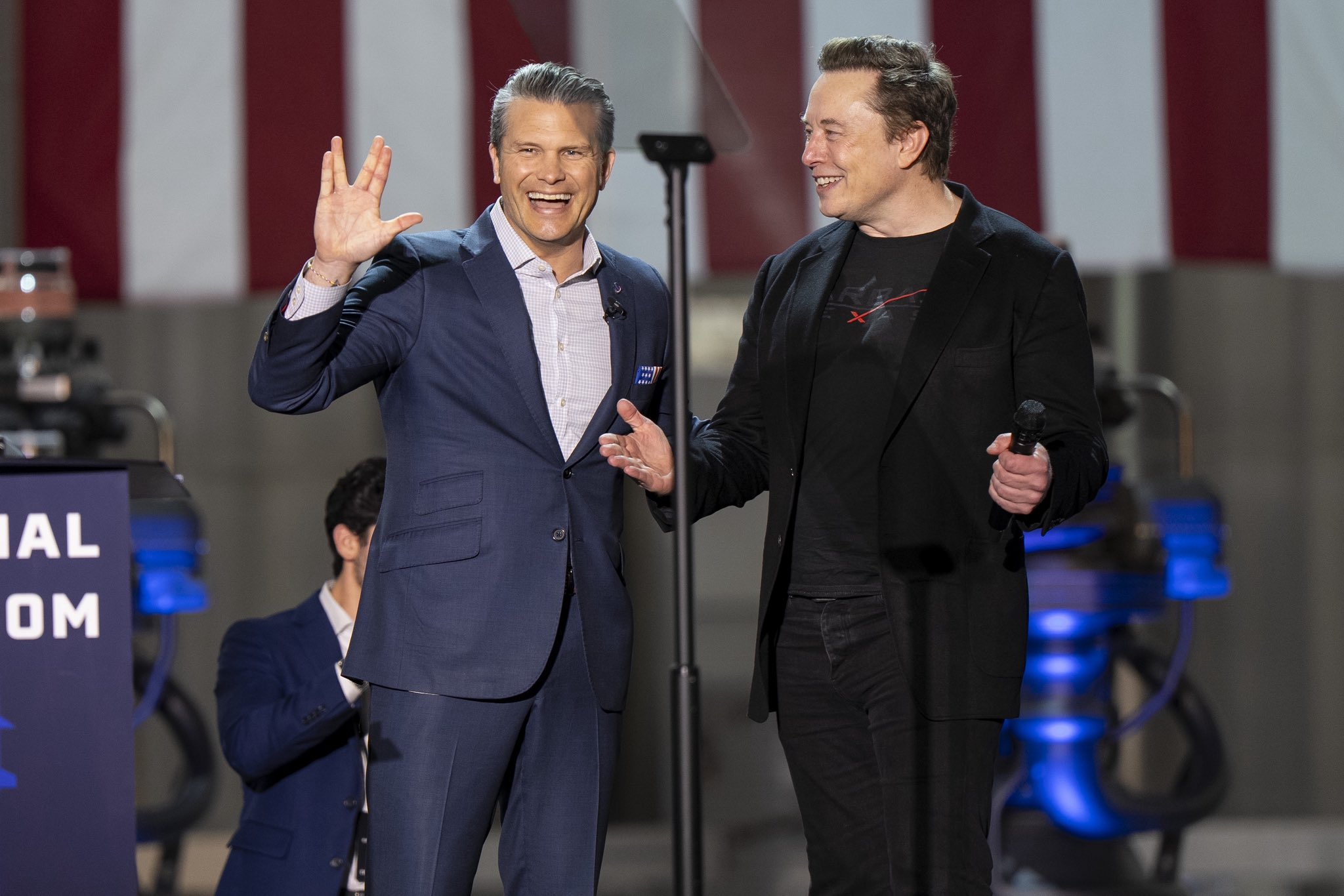
SpaceX emerged as a clear beneficiary of the Trump administration’s renewed push to accelerate military innovation, as Defense Secretary Pete Hegseth openly praised Elon Musk’s private space enterprise during a visit to the company’s Starbase launch site in Texas.
The remarks highlighted Musk’s improving relationship with the White House, as well as SpaceX’s growing role in U.S. defense.
Hegseth embraces Elon Musk’s pace
Speaking at SpaceX’s Starbase facility in Brownsville, Texas, Hegseth criticized what he described as a “risk-averse culture” among traditional defense contractors and called for faster innovation modeled after Musk’s approach. He confirmed that the Department of Defense plans to integrate Musk’s Grok AI platform into Pentagon systems, which is part of the administration’s efforts to make the U.S. military an “AI-first warfighting force.”
Hegseth stated that the Pentagon intends to deploy AI models across both classified and unclassified networks, signaling a willingness to push past earlier efforts to limit military use of artificial intelligence. His comments aligned closely with President Donald Trump’s recent call for a $500 billion increase in defense spending, Bloomberg News noted. Trump has also warned major contractors that slower production and shareholder-focused practices could put future contracts at risk.
While Hegseth criticized legacy defense firms, SpaceX was held up as an example of how aggressive timelines, vertical integration, and iterative development could reshape defense strategies. “We need to be blunt here; we can no longer afford to wait a decade for our legacy prime contractors to deliver a perfect system. Winning requires a new playbook. Elon wrote it with his algorithm: question every requirement, delete the dumb ones and accelerate like hell,” Hegseth said.
SpaceX’s expanding defense role comes into focus
SpaceX has become one of the U.S. government’s most important aerospace partners. The company holds roughly $4 billion in NASA contracts to develop Starship into a lunar lander, while also serving as a key launch provider for sensitive national security payloads using its Falcon 9 and Falcon Heavy rockets.
During the visit, Musk highlighted that his ambitions extend beyond defense contracts, reiterating long-term goals of interplanetary travel and eventual exploration beyond the solar system. Still, the optics of the event reinforced how closely SpaceX’s capabilities now align with U.S. strategic priorities.
The appearance also marked another step in Musk’s political rehabilitation after a public falling-out with the White House last year. Since leaving his role leading the Department of Government Efficiency, Musk has gradually reengaged with the administration, reconnecting with U.S. President Donald Trump during slain conservative activist Charlie Kirk’s tribute and attending events at the White House. Trump’s also recently suggested that Starlink could help restore internet access in Iran.
Elon Musk
Donald Trump turns to Elon Musk and Starlink amid Iran internet blackout
Donald Trump has stated that he plans to speak with SpaceX CEO Elon Musk about restoring internet access in Iran.

Donald Trump has stated that he plans to speak with SpaceX CEO Elon Musk about restoring internet access in Iran, as authorities in the country implement an internet blackout amid nationwide anti-government protests.
Trump points to Starlink
Speaking to reporters in Washington, Trump said Musk would be well-suited to help restore connectivity in Iran, citing his experience operating large-scale satellite networks, as noted in a Reuters report. “He’s very good at that kind of thing, he’s got a very good company,” Trump said.
Iran has experienced a near-total internet shutdown for several days, severely limiting the flow of information as protests escalated into broader demonstrations against the country’s rulers.
Starlink has previously been used in Iran during periods of unrest, allowing some users to access the global internet despite government blocks. Neither Musk nor SpaceX immediately commented on Trump’s remarks, but Musk has publicly supported efforts to provide Starlink access to Iranians during earlier periods of unrest.
Renewed Trump–Musk ties
Trump’s comments come amid a thaw in his previously strained relationship with Musk. The two had a public falling-out last year over domestic policy disagreements but have since appeared together publicly, including at Trump’s Mar-a-Lago resort. The renewed ties now intersect with foreign policy, as Starlink has become a strategic tool in regions facing censorship or conflict.
The satellite service has also played a prominent role elsewhere, most notably in Ukraine, highlighting both its potential impact and the political sensitivities surrounding its use. In Iran, Starlink support previously followed coordination between Musk and U.S. officials during protests in 2022.
The current internet blackout in Iran has drawn international attention, with rights groups estimating hundreds of deaths and thousands of arrests since demonstrations intensified late last year. Iranian authorities have not released official casualty figures, and outside verification remains limited due to restricted communications.
